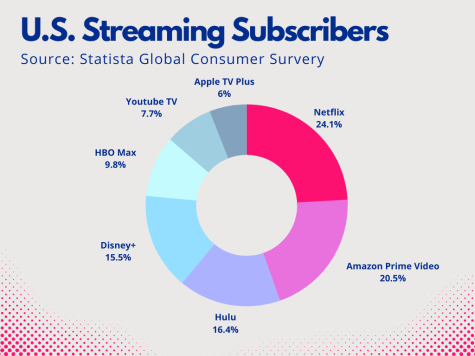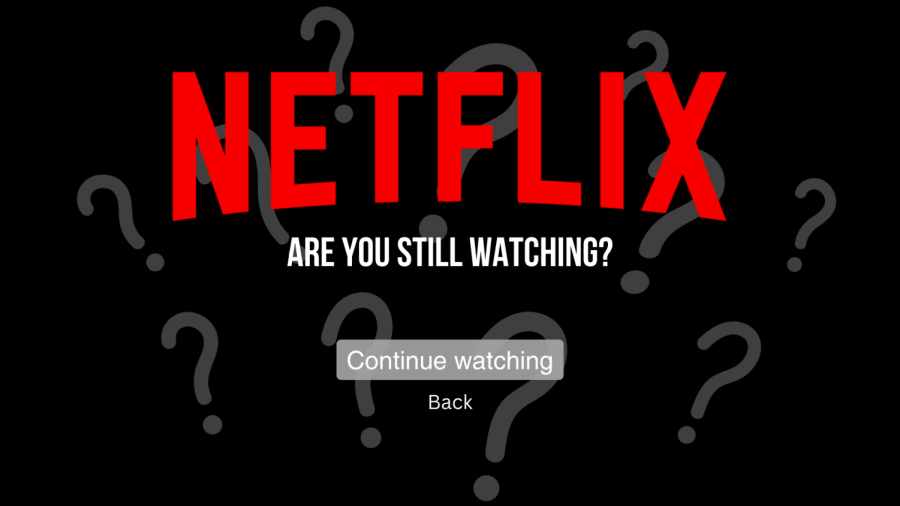When Netflix comes to mind, it’s classic. Netflix is the original streaming service and has been around longer than any of its competing rivals. However, with the lure of streaming services rattling the minds of media consumers, this raises the most central question yet: is a Netflix subscription worth it in 2022?
In the past 10 years, an increase in major streaming services has taken over, making media consumption more accessible than ever. It’s fair to say that the emergence of streaming services like Netflix, Amazon Prime Video, Youtube TV, Hulu, HBO Max, Disney+, and Apple TV Plus has revolutionized how we watch TV shows and movies.
“I think my family has six of the most popular streaming services now; a few years ago, we only had Netflix,” said Carlmont senior Teresa Vltavsky.
According to Deloitte Digital Media Trends, a study shows U.S. media consumers have an average of four streaming service subscriptions. This is an estimated $70 a month.
However, the streaming space is seeing a decrease after booming earlier in the pandemic. Now, many are signing up using the free trials that are offered by a majority of these services and then later canceling services as they figure out what is best for them.
A Bloomberg article reveals the huge loss a streaming service, like Netflix, takes when users cancel their subscriptions after watching and finishing a show. Netflix lost 200,000 customers in the first four months of 2022. The news shocked Wall Street and sent shares plummeting. Netflix, worth $308 billion in November 2021, was worth less than $100 billion in April 2022.
If Netflix is losing all this revenue through its decrease in users, does that mean that its streaming service is not worth it?
Not necessarily.
“Honestly, when I think of all the streaming services and their original movies and tv shows, nobody does it like Netflix,” said Carlmont senior Sophia Bardales.
Known for its vast selection of TV shows, films, documentaries, and original content, its commercial-free on-demand format is built for binge-watching. Netflix’s goal is to recreate a cable TV package in one place, offering enough media to fill the shoes of different TV networks.
In fact, Netflix credited its widely popular TV show Stranger Things for its success after the initial rough period at the beginning of 2022.
“In its first four weeks, ‘Stranger Things’ season four generated 1.3 billion hours viewed, making it our biggest season of English [language] TV ever,” the company said in a statement.
Vltavsky shared why she thinks Netflix is the most worth-it streaming service currently.
“Netflix has always been my go-to when it comes to watching anything. Netflix is constantly adding new content, so I find it very easy to find something to watch and enjoy,” Vltavsky said.
In comparison to its other competitors like Amazon Prime Video, which starts at $12.99 per month, (which does not include the cost of buying or renting media which is not included in the Amazon Prime subscription) Netflix’s plans range from $9.99 to $19.99.
With its extensive library, Netflix is the way to go for viewers who seek a streamlined on-demand experience where they can solely choose from the content included with their subscription.
However, comparing these two platforms is simply not enough. With the vast number of streaming services available, this can quickly become overwhelming to choose what’s worth your money. Not to Michael D. Smith, though, the J. Erik Jonsson Professor of Information Technology and Marketing at Carnegie Mellon University’s Heinz College.
“Networks and studios have been powerful for the past 100 years because they were able to control scarcity in how content gets created, distributed, and consumed,” Smith said. “None of these things are scarce anymore. The ability to create content is nowhere near as scarce as it once was, and the ability to distribute content isn’t scarce at all. What’s scarce today is customer attention, and the companies who own that customer and their data are gaining a lot of power.”
Smith explains that Netflix has an advantage despite the fact that these media services provided by established media companies may grow to be fierce rivals in the streaming market.
“I think you’d have to say Netflix is in the lead right now because they’ve got the experience in data analytics, and they own their platform and their customer base. That will be very valuable going forward. Other platforms can still succeed, but they’re starting with a lot of ground to make up,” Smith said.

Netflix offers a huge library of regularly updated content and convenient accessibility across various devices, which favors a majority of customers.
Noel Lim, a senior, adds to Smith’s point.
“You’re bound to find something enjoyable to watch on Netflix because there are so many things to choose from. I’ve gotten to a point before where I was watching multiple TV shows at once because of how broad the selection is on Netflix,” Lim said.
In this regard, Smith points out that Netflix figured out something crucial to its business many years ago: By obtaining content licenses from studios and networks, it could only feature content created with the biggest audience in mind. Netflix understood they had to develop it themselves because they determined specialized content was crucial to the success of Netflix.
With the future of streaming services in mind, the entire industry is still in its infancy. Basic concerns concerning cost, supply, and implementation are still being addressed. However, the amount of money invested in these projects indicates that this industry will likely continue to be innovative, thriving, and fiercely competitive.
Out of the growing number of streaming services, data collected reveals that Netflix continues to be the favorite.
“Netflix offers an extensive library of both classic and current movies and TV shows, as well as a ton of excellent original content and an intuitive interface,” Lim said.






















